When tackling electrical projects in your home, one of the most common questions is how many receptacles can be safely installed on a 15 amp circuit. With a seemingly endless array of wiring materials and configurations available today, it can be incredibly difficult to navigate the complexities of circuit design and know exactly which factors will affect the safety of your project. Understanding the limitations and guidelines for installing receptacles onto 15 amp circuits is an undeniably essential skill every electrician needs – but with so much information available, where do you even begin? In this blog post, we’ll break down all you need to know about how many receptacles are suitable for 15 amp circuits, allowing you to stay at ease that your electrical project is both safe and up-to-date with regulations.
National Electrical Code & Outlets
According to the National Electrical Code, a typical 15-amp circuit should not exceed 12 outlets. The number of receptacles allowed on a circuit is determined by multiplying the amperage of the circuit by 80 percent or 0.8 (15 x .8 = 12). This is to ensure that the total amount of electricity going through all of the receptacles does not exceed the rated capacity of the circuit and prevent overheating or damage to any devices connected to them.
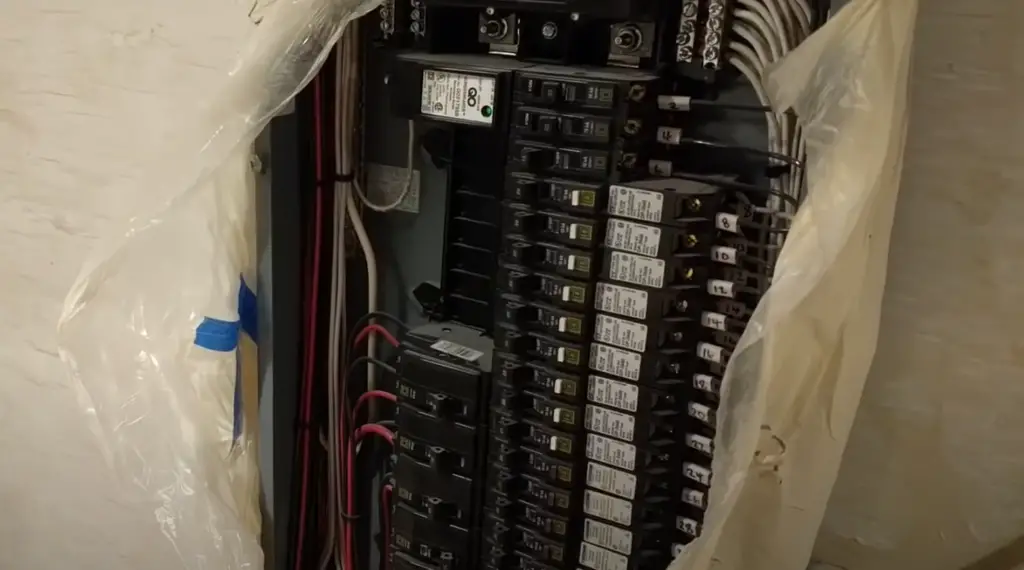
When wiring new circuits with 15 amp breakers, make sure to have a licensed electrician do the job. This ensures proper installation and connection of receptacles as well as adherence to safety guidelines. Following the National Electrical Code will help ensure that all outlets are connected safely and securely, without overloading any circuits. [1]
How Many Amps Will I Use?
The number of amps used on a 15 amp circuit depends on the devices that are plugged into the receptacles. Some items, like major appliances and some power tools, may draw up to 15 amps of electricity. On the other hand, smaller electronic devices such as cell phone chargers or computers typically only draw 1-2 amps.
In order to determine exactly how many amps your particular setup is using on a 15 amp circuit, you’ll need to consult an electrician or consider using an ammeter. An ammeter is a device used for measuring electrical current through a conductor that you would plug into the wall outlet (or other type of receptacle). With an ammeter in place, you can measure the actual current draw of your devices and make sure that you do not exceed the 15 amp limit.
It’s also important to note that while it may be tempting to plug multiple items into one outlet in order to save on outlet space or cost, this is not recommended as it could overload the circuit and cause a potential fire hazard. Therefore, when calculating how many receptacles are needed for a given circuit, always err on the side of caution and consider how many amps would likely be used when determining how many receptacles should be installed. With proper planning and use of an ammeter if necessary, you can ensure that your electrical setup remains safe and efficient. [2]

How Many Outlets Are In Most Bedrooms?
Most bedrooms typically have at least two electrical outlets. However, the number of outlets can vary depending on the type and size of the room. For example, a master bedroom may require more than two outlets for all of its electronics, such as televisions, computers, radios and lamps. In contrast, a smaller guest bedroom likely only needs one or two outlets for basic functions like lighting and charging devices. When adding new receptacles to any room in your home, make sure they are installed correctly and safely by an electrician. This will ensure that the circuit is not overloaded and that no fires occur due to faulty wiring.
Additionally, check local building codes to find out how many receptacles should be installed on a 15 amp circuit in order to maintain safety standards. In most areas, a 15 amp circuit can support up to 12 outlets or receptacles. However, it is important to check with your local codes as requirements may vary in different locations. It is always best to err on the side of caution and follow any guidelines set forth by your municipality when it comes to home wiring and electrical safety.
Overall, the number of outlets in any given room will depend on the size and purpose of that space. When considering how many receptacles should be installed on a 15 amp circuit, always consult an electrician or local building code first for guidance and safety protocols.
How to Check if Your Circuit Is 15 or 20-Amp?
To determine the amperage of a circuit, you can look at the markings on the breaker in your electric panel. A 15 amp circuit will have a marking that looks like “15A” or “15.” If it is labeled as “20A” or “20,” then it is a 20-amp circuit. It’s important to remember that even if the breaker reads 15 amps, you still should not overload the circuit by connecting too many receptacles. The number of receptacles allowed on any given circuit depends on several factors such as where they are located and how much power each individual device needs to draw. Generally speaking, however, an average 15 amp household circuit can usually handle up to 12 standard outlets without being overloaded. [3]
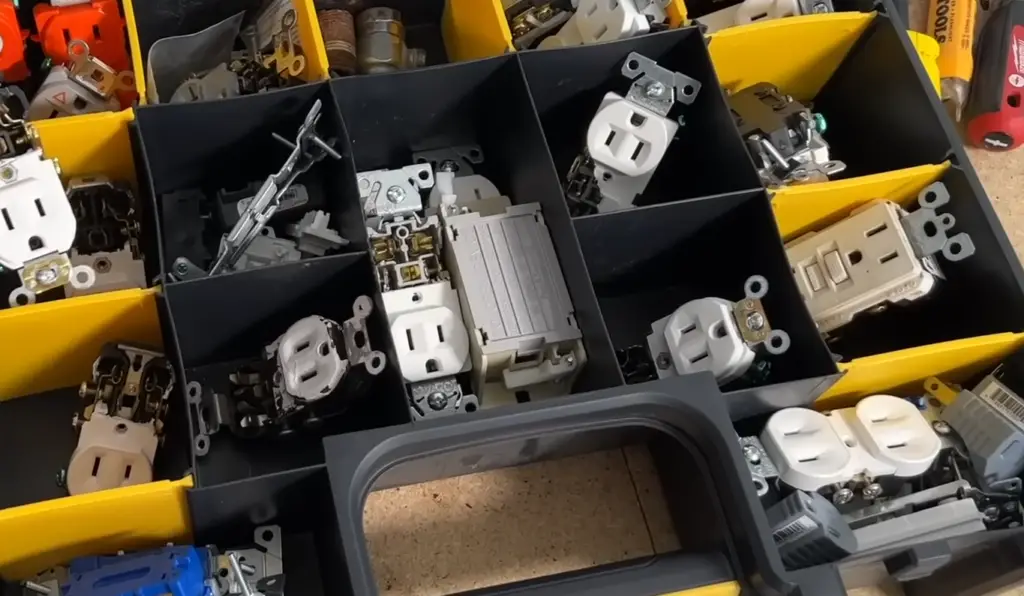
How Many Outlets Can You Put On One Circuit?
When it comes to wiring outlets on a 15 amp circuit, the most important rule to remember is that there can never be more than 12 total outlets connected to one circuit. This means if you have multiple outlet boxes wired in series, they must all be included when calculating this number. Additionally, other devices such as lights, fans and switches should also be taken into account when determining how many receptacles are on the 15 amp circuit.
In terms of outlet capacity, you should not exceed the maximum load for the 15-amp circuit. This includes both device wattage and wire size; always use 14-gauge copper wiring for a general-purpose 15 amp circuit. The maximum allowed wattage draw from an individual outlet is 1440 watts, so you should avoid plugging in any devices that are rated above this amount.
To ensure safety and prevent overloads, it’s important to calculate the wattage of all connected devices before installing the wiring. Additionally, if you plan on adding more outlets than necessary for a particular circuit, consider upgrading the breaker and wire size to accommodate the increased load safely.
In short, a 15-amp circuit can handle up to 12 total receptacles while ensuring safety and preventing overloads. Always be sure to calculate the wattage of all connected devices before installing wiring so your home stays safe for years to come. [4]
How Many Outlets Can You Put On a 15-Amp Circuit?
The number of outlets you can put on a 15-amp circuit depends on the type of outlet and the wattage rating for each appliance plugged into it. Generally speaking, you should not exceed 8 to 10 outlets on a single 15-amp circuit. This is because there is a limited amount of amperage available in a standard 15-amp circuit breaker (a 15-amp circuit breaker provides up to 1,440 watts).
Using too many outlets on a single 15-amp circuit could cause your breakers or fuses to trip due to an overload situation. Therefore, it’s important that all appliances plugged into any given 15 amp receptacle are rated for at least 14 amps or less – this ensures that they won’t draw too and overload the circuit.
In addition, you should always use GFCI outlets on any 15-amp circuit that is accessible from wet or damp locations such as bathrooms, kitchens, laundry rooms or outdoors. This will ensure that if an appliance does malfunction and cause a short circuit, the power to the receptacle will be immediately shut off, protecting you from electrical shock.
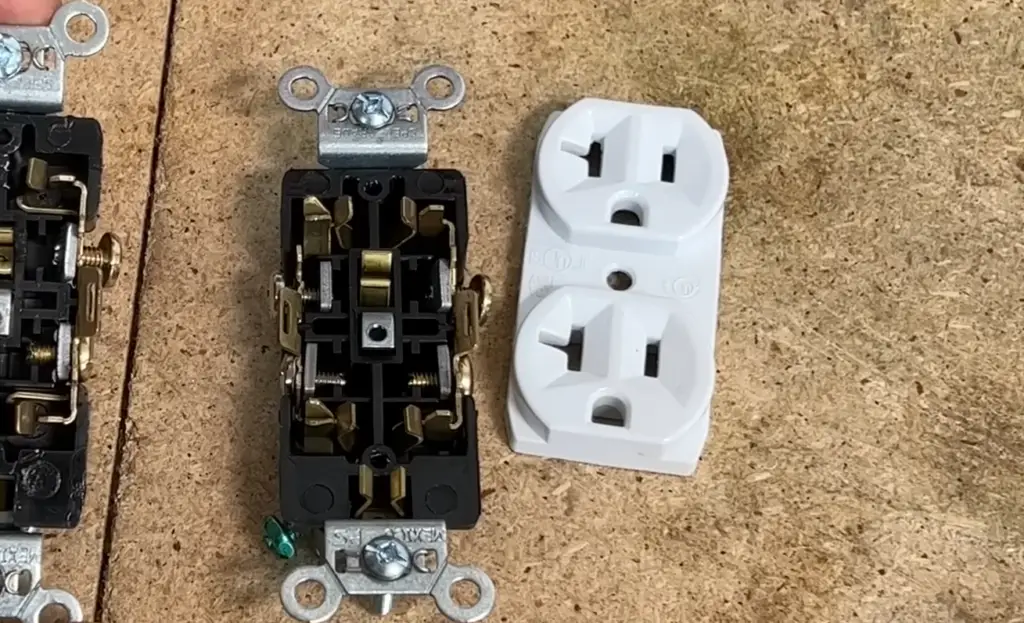
How Many Lights Can I Plug in a 15-Amp Circuit?
When considering how many lights you can plug into a 15-amp circuit, it is important to understand the difference between a receptacle and a light. A receptacle is an electrical outlet that allows you to plug in appliances and other electrical devices. Lights are devices that run on electricity and create illumination.
A 15-amp circuit typically has 14 or fewer receptacles, but this depends on the type of wiring used. The maximum number of lights allowed on a 15-amp circuit will vary based upon wattage rating per bulb and total wattage used within the circuit. Generally speaking, it is not advisable to exceed more than 1260 watts when using standard incandescent bulbs or 450 watts when using CFLs (Compact Fluorescent Lights).
You should also take into account the amperage rating of a light fixture. If you have several lights in one room running off of the same circuit, it is important to make sure that the total wattage of those lights does not exceed the 15-amp rating. Additionally, when wiring your own fixtures, be sure to use 12 gauge wire for circuits with a 15-amp rating and 14 gauge wire for circuits with 20-amp ratings. [5]
Can I Connect a 20-Amp Receptacle With a 15-Amp Circuit?
No, you cannot directly connect a 20-amp receptacle with a 15-amp circuit. The capacity of the circuit is determined by the gauge of wire used for the circuit and the amperage rating of the breaker supplying power to it. A 20 amp receptacle must be connected to a 20 Amp circuit using 12 AWG (American Wire Gauge) wiring and a 20 Amp breaker. If the current 15-Amp circuit uses 14 AWG wiring, then it can handle up to 15 amps safely. Connecting a 20-amp receptacle to this 15-amp circuit may cause an overload situation which could create overheating in wiring or fire hazards. Therefore, it is not recommended that you connect a 20-amp receptacle with a 15-amp circuit.
However, if you need more power in the given area, you could upgrade the wiring and breaker to a 20 Amp rated circuit that uses 12 AWG wiring and a 20 Amp breaker. This would allow up to 20 amps safely for any receptacle connected to it. Depending on the size of the room or area needing additional power, you may also want to consider adding additional circuits too. Installing an additional 15-Amp circuit is often a good option for smaller areas like bathrooms or kitchens where multiple appliances are needed. This will help reduce your risk of overloading one circuit and creating potential fire hazards. [6]
Can I Change a 15-Amp Circuit to a 20-Amp Circuit?
The answer to this question is yes, you can change a 15-amp circuit to a 20-amp circuit. However, it’s important to understand the process and safety measures that are required before making such an alteration. If not done correctly, there may be hazardous consequences.
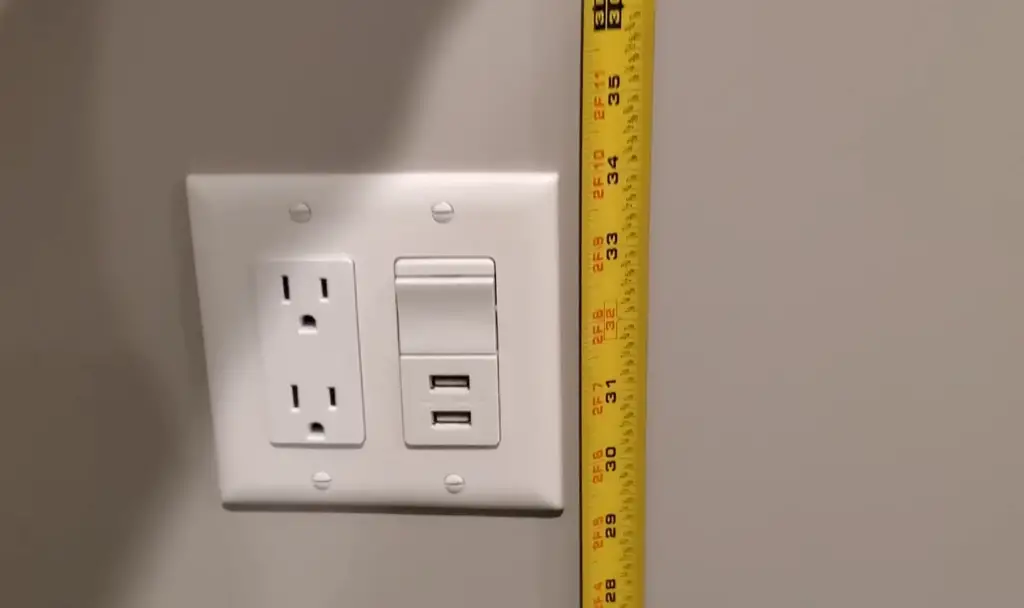
The main difference between 15 amp and 20 amp circuits is in the gauge of wire used. A larger gauge of wire (12 AWG) must be used for any 20 amp circuit compared to the 14 AWG wire typically used with a 15 amp circuit. The 12 AWG wire has thicker insulation, allowing it to handle higher amounts of electricity safely. Additionally, all receptacles on the 20 amp circuit must also be rated for 20 amps (you cannot mix 15 and 20 amp receptacles on the same circuit).
Aside from changing the gauge of wire, you will also need to ensure that your breaker is rated for 20 amps. You should also make sure you are not overloading the existing wiring by increasing the load to 20 amps if it cannot handle it. Finally, you should check with your local building codes if this type of alteration is allowed in your area.
By following these safety measures and taking adequate precautions, changing a 15-amp circuit to a 20-amp circuit can be done safely and successfully. However, if there is any doubt, it’s best to contact a professional electrician who can advise and oversee the project.
Signs of Overloaded Circuits
When it comes to figuring out how many receptacles you can safely add to a 15-amp circuit, it’s important to be aware of the signs of an overloaded circuit. An overloaded circuit will cause your breaker to trip more frequently or could even lead to a hazardous electrical fire if left unchecked.
Some common signs of an overloaded circuit include:
- Flickering or dimming lights
- Circuit breakers tripping often
- Electrical outlets not working
If you’re experiencing any of these symptoms in your home, it’s likely that you have too many receptacles on one circuit and should reduce the number for safety reasons.
When to Call the Professionals?
In most cases, it is safe to assume that there should not be more than 12 receptacles on a 15 Amp circuit. However, when it comes to the wiring of additional circuits and load calculations, it is best to consult with an experienced electrician. This will ensure that all safety protocols are met and the correct number of receptacles can be installed without overloading the existing circuit.
Additionally, working with a professional electrician is essential if you need to add any new features such as GFCI outlets or dimmer switches. They will have both the experience and tools necessary to complete the job safely and efficiently. [7]
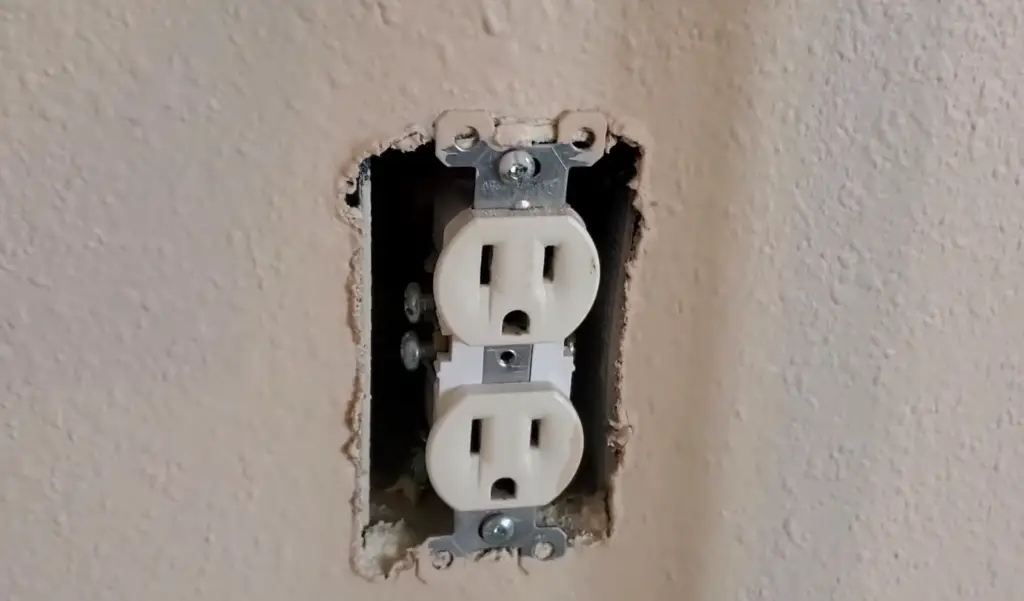
FAQ
Can I have 10 outlets on a 15 amp circuit?
No. The National Electrical Code (NEC) states that a maximum of 12 outlets may be connected to a 15 amp circuit. However, if you are using devices such as lights or computers with high power consumption, it is recommended to not exceed 8 outlets on the circuit. Furthermore, it’s important to note that the number of outlets you can have on a 15 amp circuit will vary depending on the size and type of devices plugged in. For example, if all 12 outlets were being used for low-power devices like lamps or televisions, then this would be acceptable according to NEC standards. If you were using some higher powered appliances such as refrigerators or microwaves, then fewer outlets would be safe on this particular circuit. It is always best to consult a qualified electrician for the most accurate information.
When wiring a circuit, how far apart should outlets be spaced?
NEC requires that outlets are spaced no further than 6 feet apart and be mounted within 12 inches of an obstruction such as a wall, ceiling, or floor. Furthermore, receptacles must not be placed where they can easily be reached by someone standing on a ladder or other elevated surface. Additionally, it is important to ensure that there is enough space between outlets so they won’t interfere with one another when in use. This will help prevent electrical shocks and fires from occurring due to overloaded circuits. Again, it is recommended to consult with an experienced electrician before starting any wiring projects.
How many outlets can you put on a 15 amp circuit?
This is a common question that comes up when you are wiring your home. The answer depends on several factors, including the type of receptacles used and the size of the wires running to each outlet. Generally, you can safely put eight to twelve outlets on a 15 amp circuit without overloading it. If you are adding more than this, then consider upgrading your wiring and amperage or installing additional circuits. The National Electrical Code (NEC) limits the number of receptacles allowed on a single circuit based on their size and use. Table 210-21 outlines specific requirements for 15 amp circuits, such as one duplex outlet per wall space or two single outlets per wall space that measure less than 12 inches apart.
Can I put 12 outlets on a 20 amp circuit?
No, it is not recommended to put 12 outlets on a 20 amp circuit. The National Electrical Code (NEC) recommends that no more than 10 receptacles be placed on any 15 or 20 amp circuit. If more than 10 receptacles are required in the same area, then multiple circuits should be used or a larger size breaker should be installed. Furthermore, each individual outlet must have its own separate overload protection device such as a fuse or circuit breaker. This is for safety reasons and to prevent electrical fires due to overloaded circuits.
What is the maximum load on a 15 amp breaker?
The maximum load a 15 amp breaker is designed to carry is 1,440 watts. This is because the power rating of a 15 amp breaker is 1,440 watts (120 volts x 12 amps). To ensure that your circuit isn’t overloaded, you should not exceed this wattage limit. If you do exceed it and the breaker trips, you should replace it with a higher amperage breaker. In terms of receptacles, this means you can safely place up to 8-12 outlets on a single 15 amp circuit. However, if any of these receptacles are being used to power larger appliances such as microwaves or electric ovens/stoves then fewer may be recommended. Additionally, when wiring more than one outlet don’t forget to add in the wattage of any lights or fans that may also be connected.
Useful Video: Shall I Use 15A or 20A Receptacles on a 20A circuit per 2023 NEC 210.21(B) ?
Conclusion
In conclusion, the answer to how many receptacles you can install on a 15-amp circuit varies depending on the type of receptacle, wire gauge used, and if any other devices are connected to the same circuit. Generally speaking, you should never exceed more than 12 outlets on a 15-amp circuit. You should also consider that most 120V electrical circuits in homes are designed for general purpose use and never overload them with too many appliances or devices. When wiring your home or adding new outlets it’s best to contact a certified electrician to ensure all safety regulations are followed.
References
- https://bates-electric.com/outlets-wire-on-same-circuit/
- https://waypointinspection.com/how-many-outlets-15-amp-circuit/
- https://www.wikihow.com/How-Many-Outlets-on-a-15-Amp-Circuit
- https://todayshomeowner.com/electrical/guides/how-many-outlets-on-a-15-amp-circuit/
- https://www.galvinpower.org/how-many-outlets-on-a-15-amp-circuit-breaker/
- https://www.finehomebuilding.com/2022/11/18/how-many-outlets-per-circuit
- https://www.electronicshub.org/15-amp-circuit-outlets/














Leave a Reply